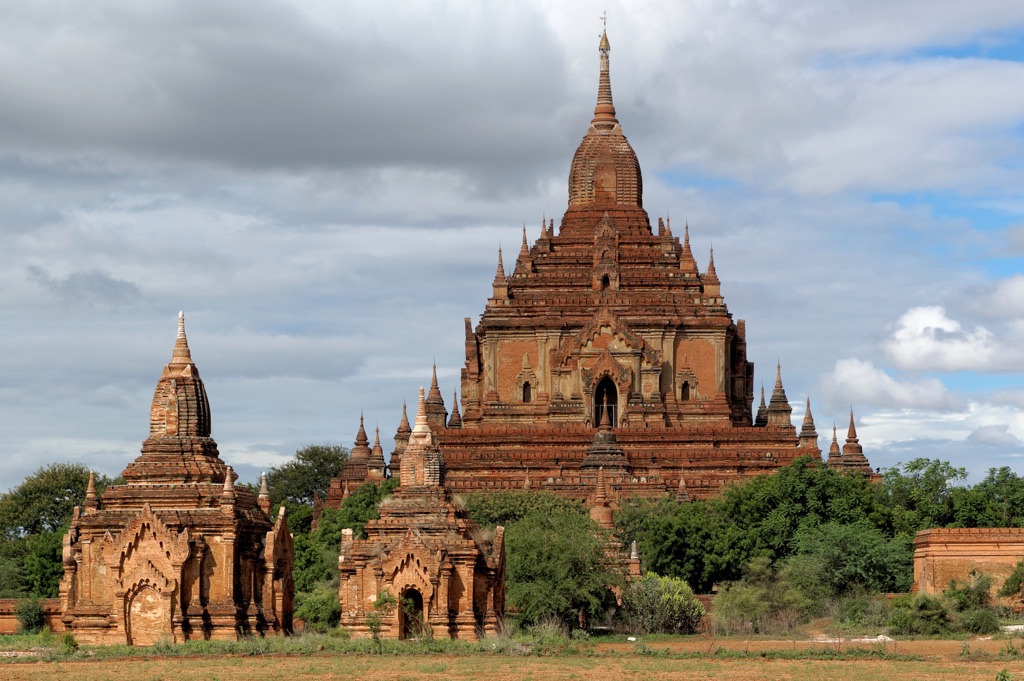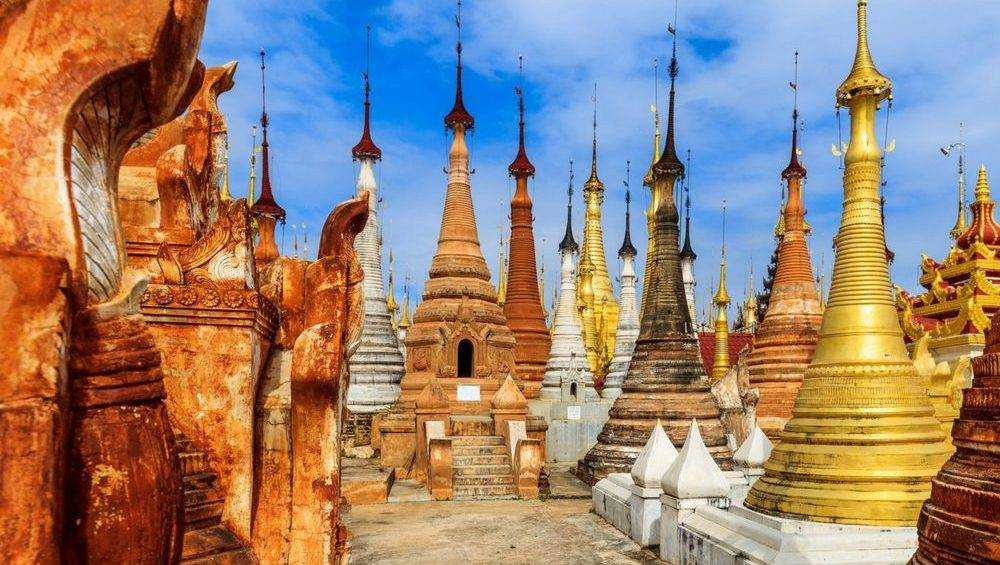The Htilominlo Temple stands as a testament to the architectural prowess of the Bagan civilization in Myanmar. Built during the reign of King Htilominlo, also known as Nandaungmya, it dates back to the early 13th century. This majestic structure is renowned for its intricate plaster carvings and glazed sandstone decorations. It is one of the larger temples in Bagan and has survived numerous earthquakes, retaining much of its original grandeur. The temple’s name, Htilominlo, is derived from the king’s nickname, meaning “the umbrella of the three worlds.”
Bagan Dynasty

The Bagan Dynasty, also known as the Pagan Dynasty, marks a defining period in the history of Myanmar, formerly known as Burma. Established in the early 9th century by King Anawrahta, who reigned from 1044 to 1077, this dynasty is celebrated for unifying the regions that comprise modern-day Myanmar. Under King Anawrahta’s leadership, Bagan emerged as a significant power in Southeast Asia, laying the foundation for the Burmese culture, language, and ethnicity. The dynasty’s influence extended through its innovative administrative systems, the spread of Theravada Buddhism, and the flourishing of Burmese literature, art, and architecture.
The architectural legacy of the Bagan Dynasty is perhaps its most enduring and visible contribution. The ancient city of Bagan, the capital of the dynasty, is home to over 10,000 Buddhist temples, pagodas, and monasteries built between the 11th and 13th centuries. Today, this archaeological area stands as a testament to the dynasty’s architectural ingenuity and religious devotion, attracting scholars, tourists, and pilgrims from around the world. The sheer scale and artistic achievement of the Bagan temple complex underscore the dynasty’s golden age, during which Burmese culture and Theravada Buddhism flourished.
The Bagan Dynasty also played a crucial role in the spread of Theravada Buddhism throughout Southeast Asia. King Anawrahta, after converting to Theravada Buddhism, embarked on a mission to establish it as the dominant religious tradition in the region. He sent missions to Sri Lanka, fostering religious and cultural exchanges that enriched both Burmese and Sri Lankan societies. The dynasty’s patronage of Buddhist monastic institutions led to the proliferation of Pali scholarship and the Theravada Buddhist canon, which had a lasting impact on the religious landscape of Southeast Asia.
However, the Bagan Dynasty’s prosperity was not to last forever. In the late 13th century, the dynasty faced internal strife and external threats that eventually led to its decline. The Mongol invasions of 1287, led by Kublai Khan, significantly weakened the dynasty’s power and marked the beginning of its downfall. The capital city of Bagan was sacked, leading to a period of instability and fragmentation in the region. The dynasty’s decline paved the way for the rise of new powers in Myanmar, such as the Taungoo and Konbaung dynasties, which further shaped the course of Burmese history.
Despite its fall, the legacy of the Bagan Dynasty continues to influence Myanmar to this day. The dynasty’s contributions to Burmese culture, language, and religion are foundational to the nation’s identity. The ancient city of Bagan, now a UNESCO World Heritage Site, serves as a symbol of the dynasty’s historical significance and its enduring influence on Myanmar’s cultural heritage. The preservation and study of Bagan’s monuments offer valuable insights into the dynasty’s achievements and the historical development of Southeast Asia.
In conclusion, the Bagan Dynasty represents a pivotal era in Myanmar’s history, characterized by significant achievements in politics, religion, and culture. Its legacy, particularly visible in the majestic ruins of Bagan, continues to captivate and inspire. The dynasty’s role in spreading Theravada Buddhism and its contributions to Burmese art, architecture, and literature have left an indelible mark on the cultural fabric of Myanmar and the broader Southeast Asian region. As scholars and tourists alike explore the ancient city of Bagan, they pay homage to a dynasty that shaped the destiny of a nation.
Bagan Dynasty Archaeological Sites and Artifacts

The Shwe Indein Pagoda
The Shwe Indein Pagoda is a fascinating historical site located in the village of Indein, near Inle Lake in Myanmar. This complex of Buddhist stupas, some dating back to the 14th century, is a testament to the rich cultural and religious history of the region.
